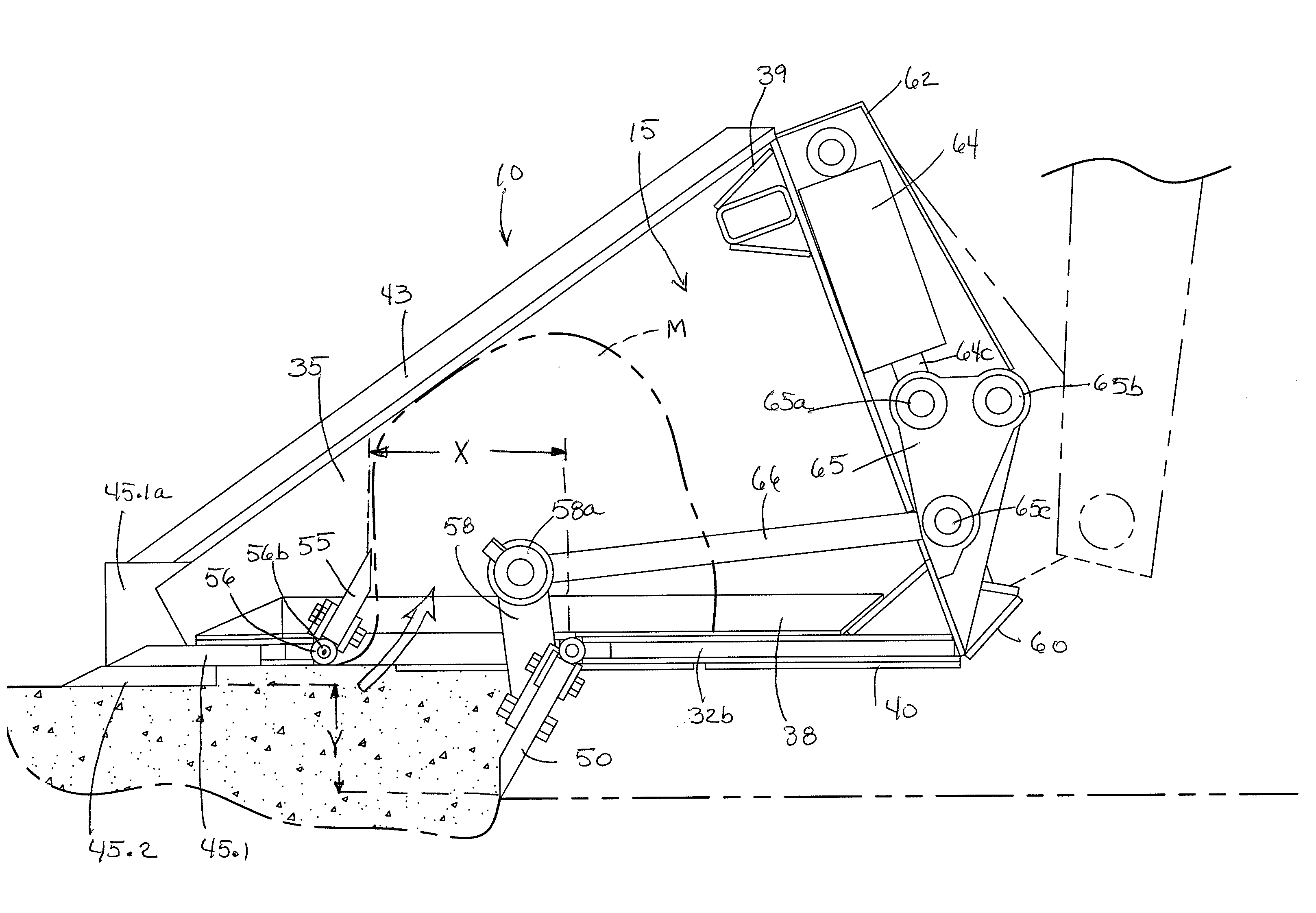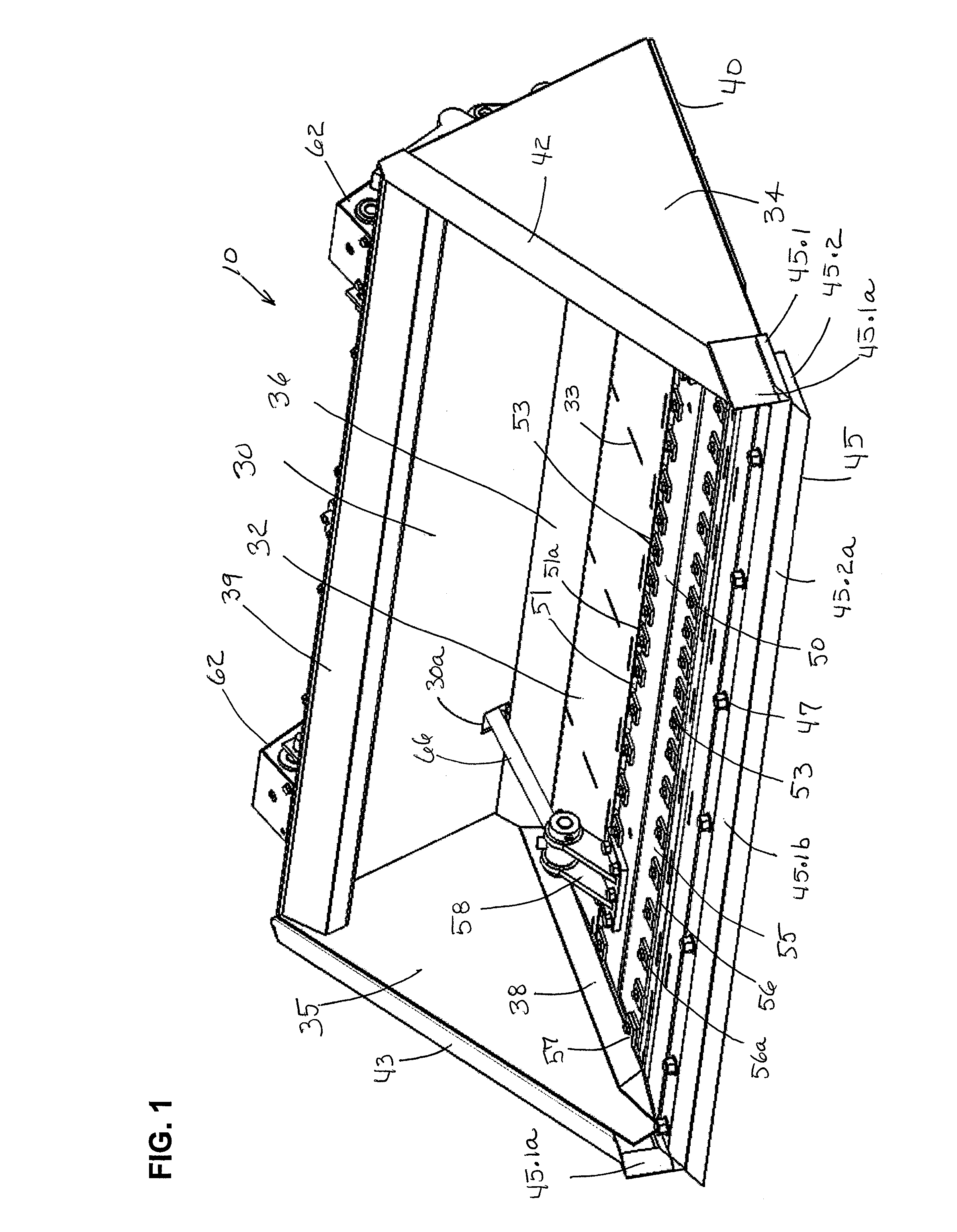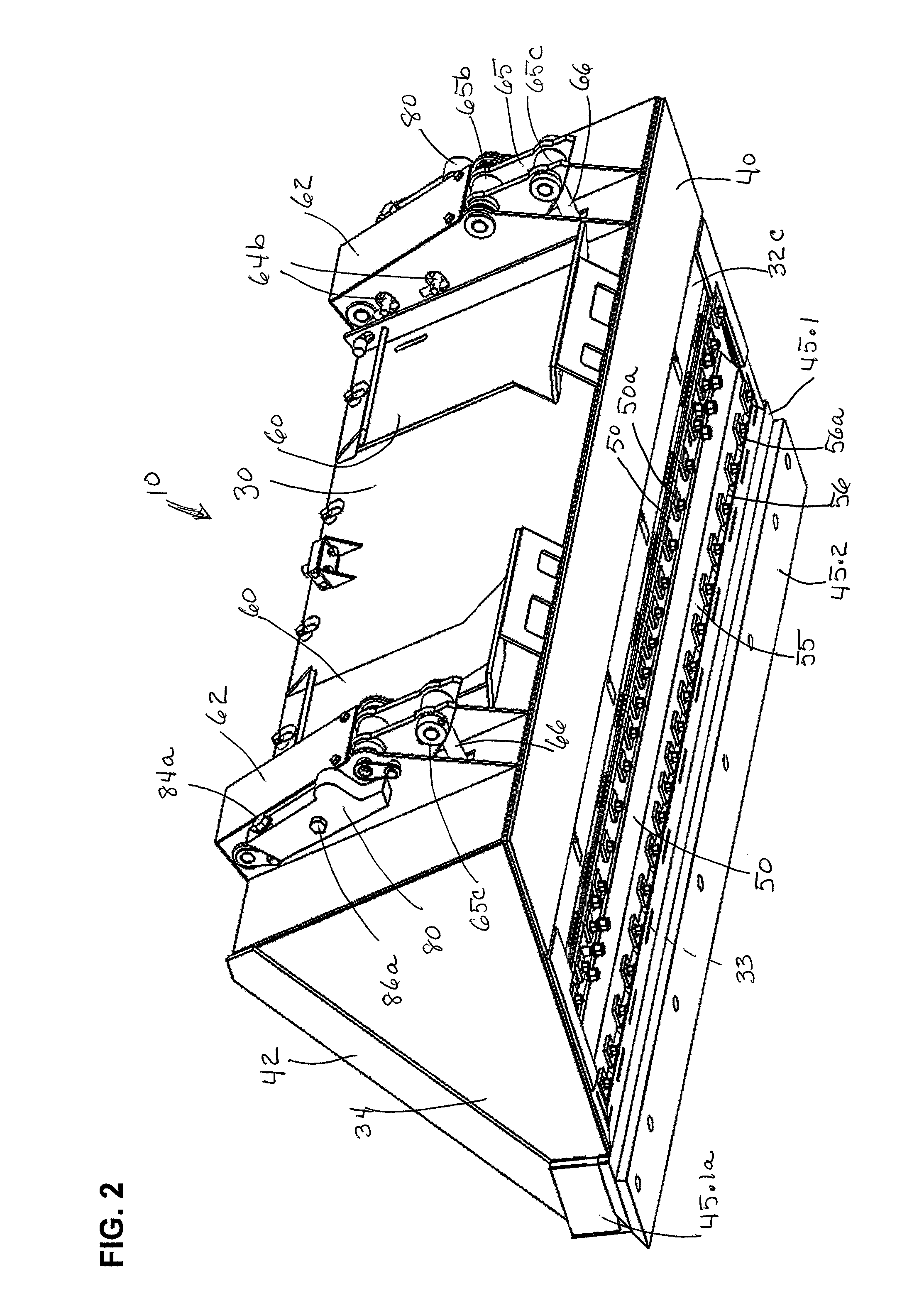Material-handling bucket with scraper blade
a technology of scraper blade and material bucket, which is applied in the direction of lifting devices, machines/dredgers working methods, constructions, etc., can solve the problems of uneven material removal, not allowing significant material accumulation, and not being optimally designed for scraping or skimming buckets, etc., to achieve effective opening area expansion, simple, efficient, cost-effective
- Summary
- Abstract
- Description
- Claims
- Application Information
AI Technical Summary
Benefits of technology
Problems solved by technology
Method used
Image
Examples
Embodiment Construction
[0043]The below described preferred embodiments of bucket assemblies illustrate the general principles embodied in the invention. Such descriptions are not intended to be offered or used in any limiting manners, but only illustrate specific examples of bucket assemblies and portions thereof incorporating the broad principles of the invention. All alternatives and variations of the principles and features of the described embodiments are intended to be included within the broad scope of the claims appended hereto, whether such variations and alternatives are specifically addressed herein.
[0044]Referring to the Figures, a first embodiment of a bucket assembly incorporating the principles of this invention is illustrated at 10. As used herein in describing the bucket assemblies of the preferred embodiments, the terms “bucket assembly” and “bucket” will be used interchangeably. The bucket assembly 10 of the first embodiment is generally of the type referred to as a front-end loading buc...
PUM
 Login to View More
Login to View More Abstract
Description
Claims
Application Information
 Login to View More
Login to View More - R&D
- Intellectual Property
- Life Sciences
- Materials
- Tech Scout
- Unparalleled Data Quality
- Higher Quality Content
- 60% Fewer Hallucinations
Browse by: Latest US Patents, China's latest patents, Technical Efficacy Thesaurus, Application Domain, Technology Topic, Popular Technical Reports.
© 2025 PatSnap. All rights reserved.Legal|Privacy policy|Modern Slavery Act Transparency Statement|Sitemap|About US| Contact US: help@patsnap.com



